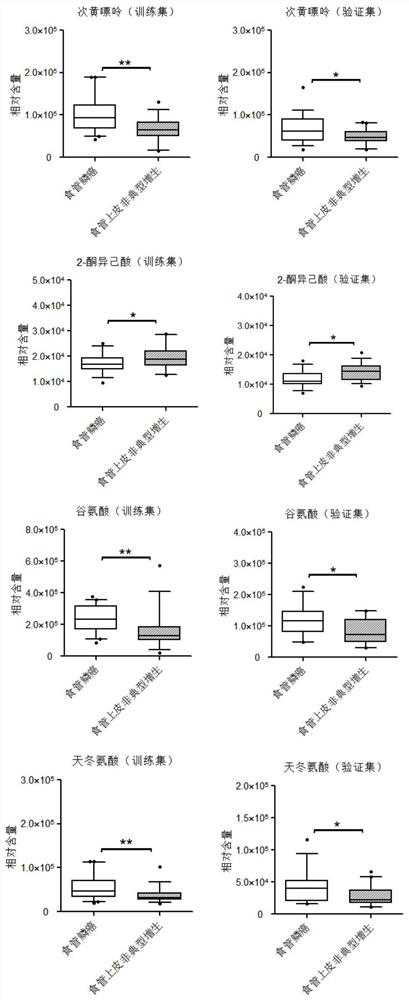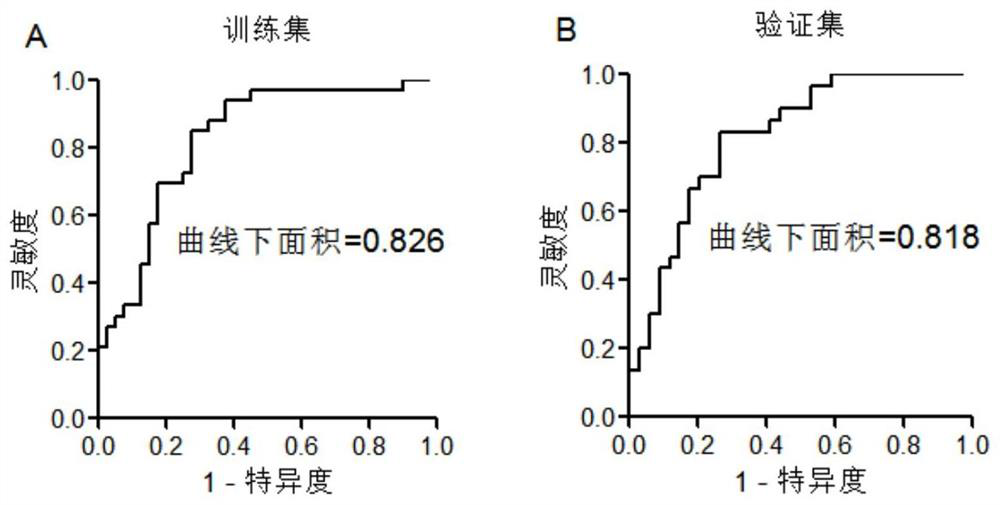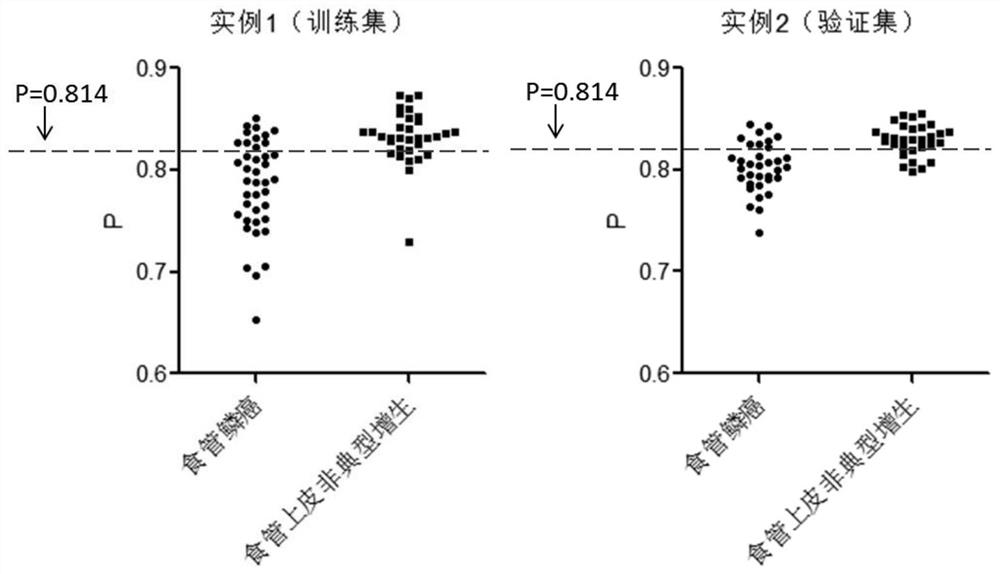Application of combined metabolism biomarker for diagnosing esophageal squamous carcinoma and kit
An esophageal squamous cell carcinoma and combined technology, which is applied in the fields of analytical chemistry, biochemistry and clinical medicine, can solve the problems of limiting the monitoring of high-risk groups for early detection and early diagnosis of esophageal squamous cell carcinoma, and achieves low detection cost, efficient detection, and high diagnostic sensitivity. Effect
- Summary
- Abstract
- Description
- Claims
- Application Information
AI Technical Summary
Problems solved by technology
Method used
Image
Examples
Embodiment 1
[0030] 1. Serum Sample Collection
[0031] All volunteers involved in the present invention signed an informed consent form before serum sample collection.
[0032] Serum samples from 40 patients with esophageal squamous cell carcinoma and 33 patients with esophageal epithelial atypical hyperplasia were collected under the same collection conditions and set as the training set. All patients were confirmed by histopathology. The collected blood samples were left to stand for 30 minutes, then centrifuged at 4000 rpm for 10 minutes, and the supernatant serum was collected and stored in a -80°C refrigerator.
[0033] 2. Analysis method
[0034] 2.1 Serum sample pretreatment
[0035]Serum samples taken from -80°C were thawed at 4°C, vortexed for 10 seconds, 50 μL of serum was taken, and 200 μL of cold methanol containing 10 μg / mL tridecanoic acid (also known as tridecanoic acid) was added ( 0°C), vortexed for 1 minute and placed in an ice-water bath for 10 minutes. Next, the s...
Embodiment 2
[0046] 1. Serum Sample Collection
[0047] Sample collection method is the same as Example 1. Example 2 includes 34 cases of esophageal squamous cell carcinoma and 39 cases of atypical hyperplasia of esophageal epithelium, and these samples are set as a validation set.
[0048] 2. Analysis method
[0049] With embodiment 1.
[0050] 3. Analysis of serum verification results and diagnostic potential
[0051] The verification results of Example 2 are basically consistent with the training set data of Example 1. Specific results such as figure 1 shown. Using linear regression to combine hypoxanthine, 2-ketoisocaproic acid, glutamic acid and aspartic acid, the results are as follows figure 1 , figure 2 B. image 3 As shown, the area under the curve, sensitivity and specificity are high, and the discrimination effect of each group is good, which has a good application prospect.
[0052] The present invention also relates to a kit for detecting patients with esophageal squ...
PUM
 Login to View More
Login to View More Abstract
Description
Claims
Application Information
 Login to View More
Login to View More - R&D
- Intellectual Property
- Life Sciences
- Materials
- Tech Scout
- Unparalleled Data Quality
- Higher Quality Content
- 60% Fewer Hallucinations
Browse by: Latest US Patents, China's latest patents, Technical Efficacy Thesaurus, Application Domain, Technology Topic, Popular Technical Reports.
© 2025 PatSnap. All rights reserved.Legal|Privacy policy|Modern Slavery Act Transparency Statement|Sitemap|About US| Contact US: help@patsnap.com



